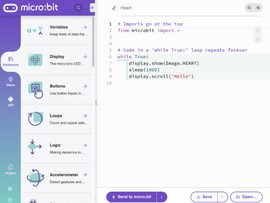do your :bit winners
Today we announce the winners and runners up of our global challenge for children and teens to combine creativity and technology to solve problems based around the UN Global Goals.
Since the launch of do your :bit in September 2019, children around the world have been working on their own solutions to local and global problems. Here are the winners from each region:
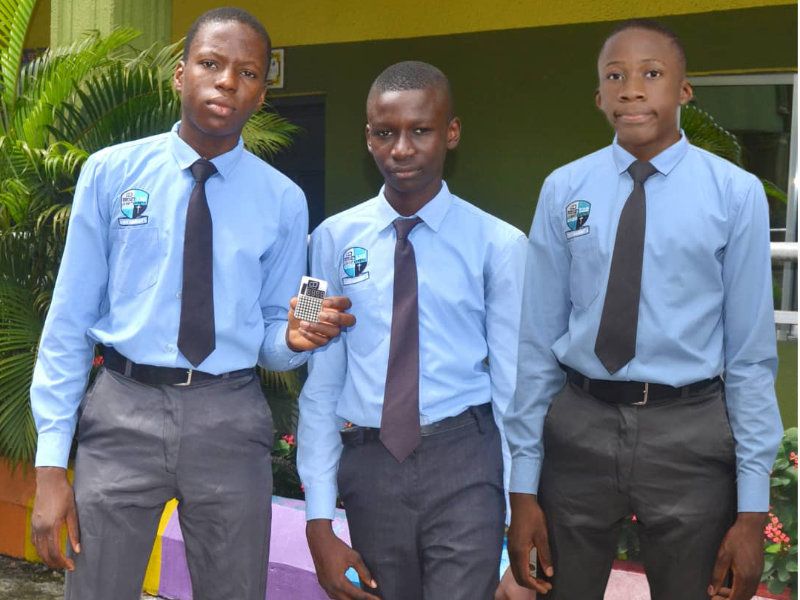
Africa winners Success, Chris-Jacob, Sharon

Asia & Pacific winner Anqi
Africa
Success, Chris-Jacob, Sharon
Well done to Success, Chris-Jacob and Sharon. After realising that underwater pipe-line vandalism caused terrible harm to life under water, this team created an alarm as their solution towards achieving Global Goal 14 and reducing oil spillages.
Sharon, Chris-Jacob and Success used a combination of the micro:bit radio function and motion sensor to warn oil companies of potential vandalism of their pipes. The micro:bits are attached to the oil pipes in waterproof casings and, using their motion sensors, are activated if the pipes shake. Once activated they will send a radio signal to another micro:bit above water, causing that micro:bit to sound an alarm and alert the oil company to potential danger.
The judges were impressed that the team had created a really imaginative solution to a local problem in the southern communities of Nigeria.
Asia & Pacific
Anqi
Anqi submitted a truly unique solution that protects birds from colliding with glass windows.
Anqi used a micro:mate board alongside a micro:bit to connect with an ultrasonic distance sensor that detects the distance between the glass and any object approaching it. When the object is within a certain range of the glass, a signal is sent via wires to LEDs on the glass. The LEDs flash and make the bird aware that the glass is there.
The judges thought Anqi’s submission was really creative, incredibly well researched and elegantly presented.

Europe winners Danylo, Oleksandra, Volodymyr
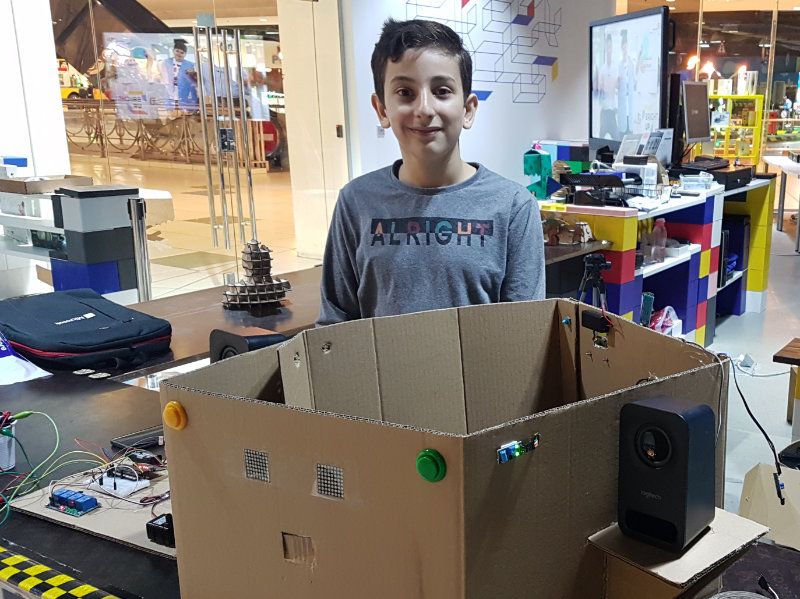
Middle East winner Zayd
Europe
Danylo, Oleksandra, Volodymyr
This impressive 3D printed cleaner boat is designed to help clean a polluted river near where the team live, that has become polluted. The project to help clean up the local river involved the whole school and Danylo, Oleksandra and Volodymyr worked hard to create a protoype in their robotics class. They even updated the prototype after it was tested to make it more efficient.
The judges loved how the project involved the entire school and was targeted towards finding a solution to a very local problem.
Middle East
Zayd
Zayd wowed the judges with his complex Z Palm Tree creation. This creative and innovative solution towards Global Goal 15, Life on Land, would enable a tree to ‘communicate’ its needs.
Zayd has used multiple external and internal sensors to create the Z Palm Tree, including a vibration sensor to sense the tree being cut down, a flame sensor to detect the tree being burned down, a moisture sensor in the ground to detect water level and the internal temperature sensor to approximate the air temperature. With the results recorded by the sensors, the Z Palm Tree uses Bluetooth to connect to an app created by Zayd which will warn the user if the tree needs more water. It connects to the same app via the internet to warn the user of a fire, and uses speakers to give information on the air temperature, to shout for help if being cut down and to warn anyone nearby if there’s a fire. But the features of Zayd’s creation don’t stop there. He has also connected a water pump to the app so that the user can click a button to water the tree, and has used a servo and two LED matrices to create a face that shows emotion and moves its mouth when talking.
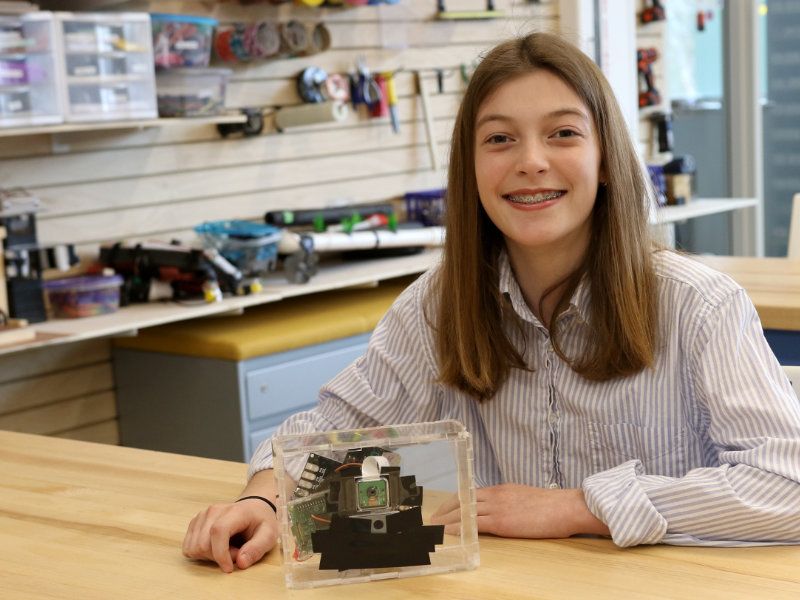
North America winner Lynn
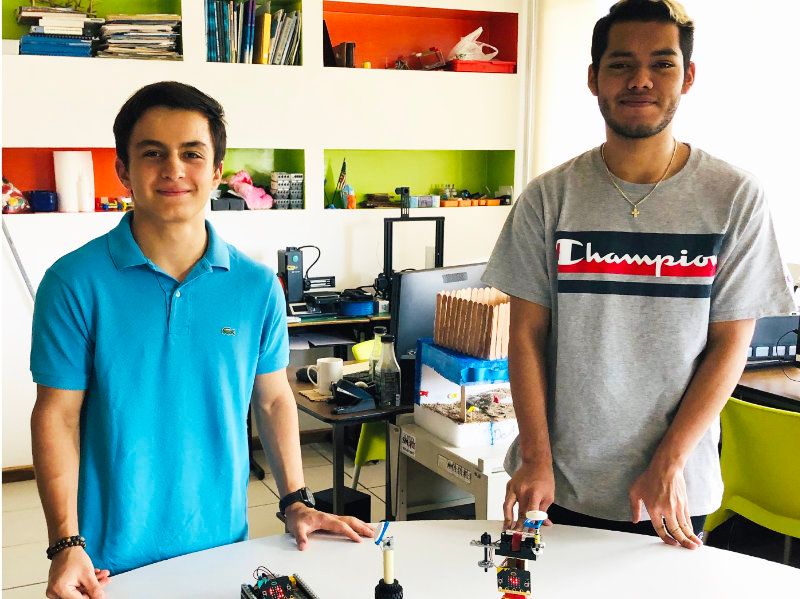
Latin America winners Mauro and Jan
North America
Lynn
Lynn created a complex device as a solution towards Global Goal 15, Life on Land. With this creation, Lynn aims to not only solve the issue of deforestation, but also raise awareness of it.
Lynn has used a gator:microphone, a camera and a Raspberry Pi to detect loud sounds in forests. The gator:microphone is connected via wires to a micro:bit that it receives its code from, and a Raspberry Pi that receives a signal when a sound has been detected. It then automatically takes a photo and posts it to a public Twitter account for a park ranger to review. The use of Twitter raises awareness of the issue of deforestation with the local community.
The judges were all impressed with Lynn's unique and comprehensive response.
Latin America
Mauro and Jan
Mauro and Jan decided to work together to create a solution after realising that hammerhead sharks are in danger in the island of Isla de Cocos in Costa Rica where they live.
The solution involves a collection of buoys, with micro:bits attached, surrounding a protected area of water, and a micro:bit on board every boat in the area. Using the radio functionality of the micro:bit, the signal strength between the micro:bits is monitored by the buoy micro:bits. If the radio signal strength goes above a specified value, indicating the boat is getting closer, the boat’s micro:bit will alert the user that it should change its course. If the boat ignores this alert and continues getting closer to the buoy, increasing the radio signal strength further, the buoy micro:bit will alert the boat that it has called the police. The buoy micro:bit will then switch radio frequency and send a radio signal to another micro:bit in a police station to alert the police of the boat that's not obeying the rules.
The judges thought it was a really well thought through idea and multichannel solution.
Regional runners-up
We were hugely impressed by the diversity and imagination showed by so many young people who invented ways technology like the micro:bit can solve challenges faced by life on land and life in water.
AFRICA: Happyness, Steven and Janeth, Tanzania - 'Providing lights in rural areas'. This team project aims to ensure that people in Tanzania can access electric lights in the evenings.
ASIA AND PACIFIC: Sze Kay Chan, Sharol and Jayven, Malaysia - 'Project Aquagreen'. This complex automated aquaponics system automates the routine tasks required to operate an aquaponics system.
EUROPE: Plamena, Bulgaria - 'Save the Brown Bear'. This project aims to protect the 16 Brown Bears that live nearby by creating a safety collar and making use of the micro:bit radio function.
MIDDLE EAST: Hussain, Saudi Arabia - 'Trash Watcher'. This creation measured the mass of waste in bins and sent a message to the recycling team to collect them when full.
NORTH AMERICA: Arushi, Canada - 'MY SCALE' is an affordable and portable water quality measuring device which used simple accessories found in a pencil case.
LATIN AMERICA: Florencia, Thiago and Morena, Uruguay - 'Mini Automated Greenhouse'. This team project helps protect existing forests and support the cultivation of more trees to repopulate forests that have been destroyed.
Special mention
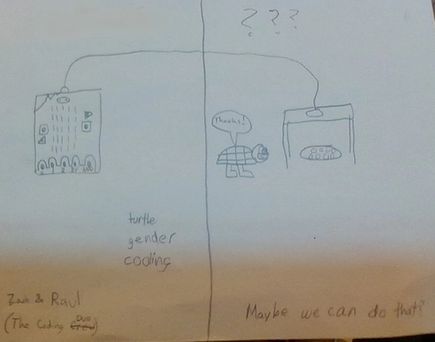
The judges wanted to give a special mention to Raul and Zach from America for their creation - the Sea Turtle Gender Cooling system!
Raul and Zach want to prevent sea turtles from becoming extinct by ensuring that there are enough male turtles in the world to mate. They read that if a turtle egg incubates above 30C the turtle hatchling will be female but if it goes under 27C, they will be male.
Raul and Zach have created a system that can cool or heat the turtle nest to determine the turtles' gender.
Matt Larsen-Daw from the WWF-UK thought the idea was really innovative and wanted to give the team a special mention. He said “This project really stood out for us as being based on a real knowledge of - and love for - the science of the natural world. In a world that is changing faster than many species can adapt, innovative ideas founded in science like this will be pivotal for conservation organisations such as WWF if we are to protect wildlife populations and restore stability to the planet.”
Well done to all of our winners and runners up!
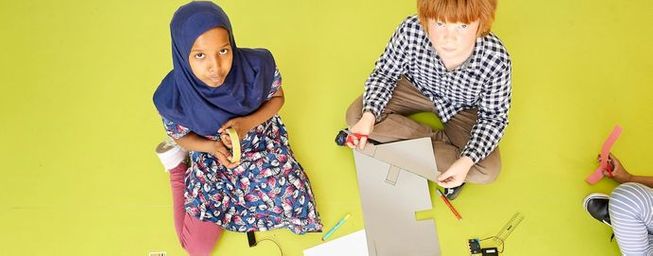
Get inspired
If you're inspired get your students or own children thinking about the environment and helping people stay fit and healthy, our Design challenges are based around the UN Global Goals and have the activities and sample code you need.
We've also got quick and easy projects relating to the Global Goals. Track biodiversity by counting birds you see from your window, log temperature changes or make a safety light that switches on when it gets dark.
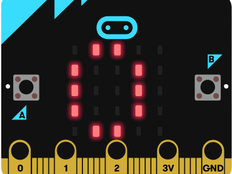
Count skips, jumps, birds - or anything!
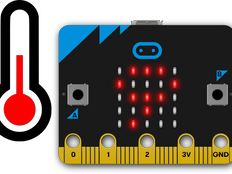
Make a simple thermometer with your micro:bit
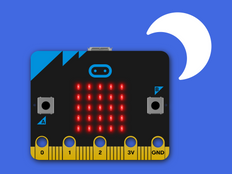
Create an automatic light that turns on when it’s dark.
Keep in touch
We love hearing from you! Use the #microbit hashtag on Twitter or Facebook and sign up for our weekly email newsletter.
